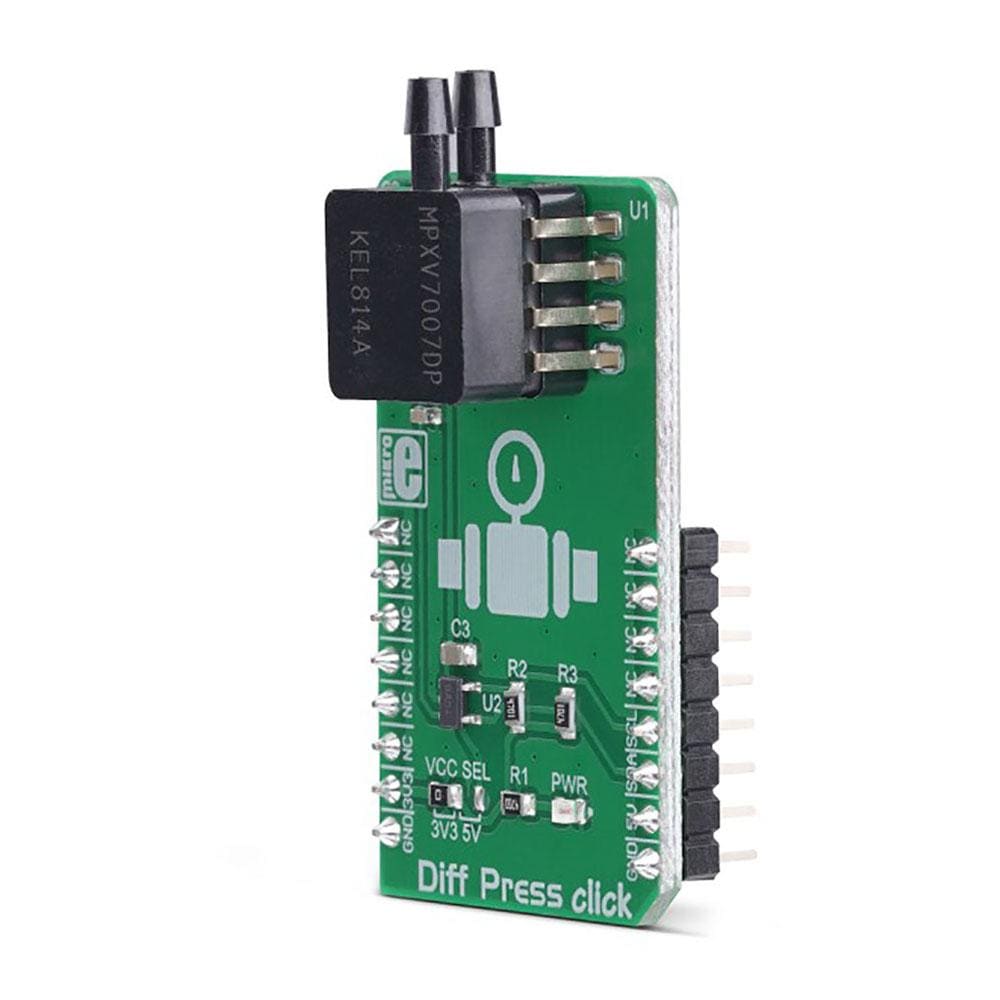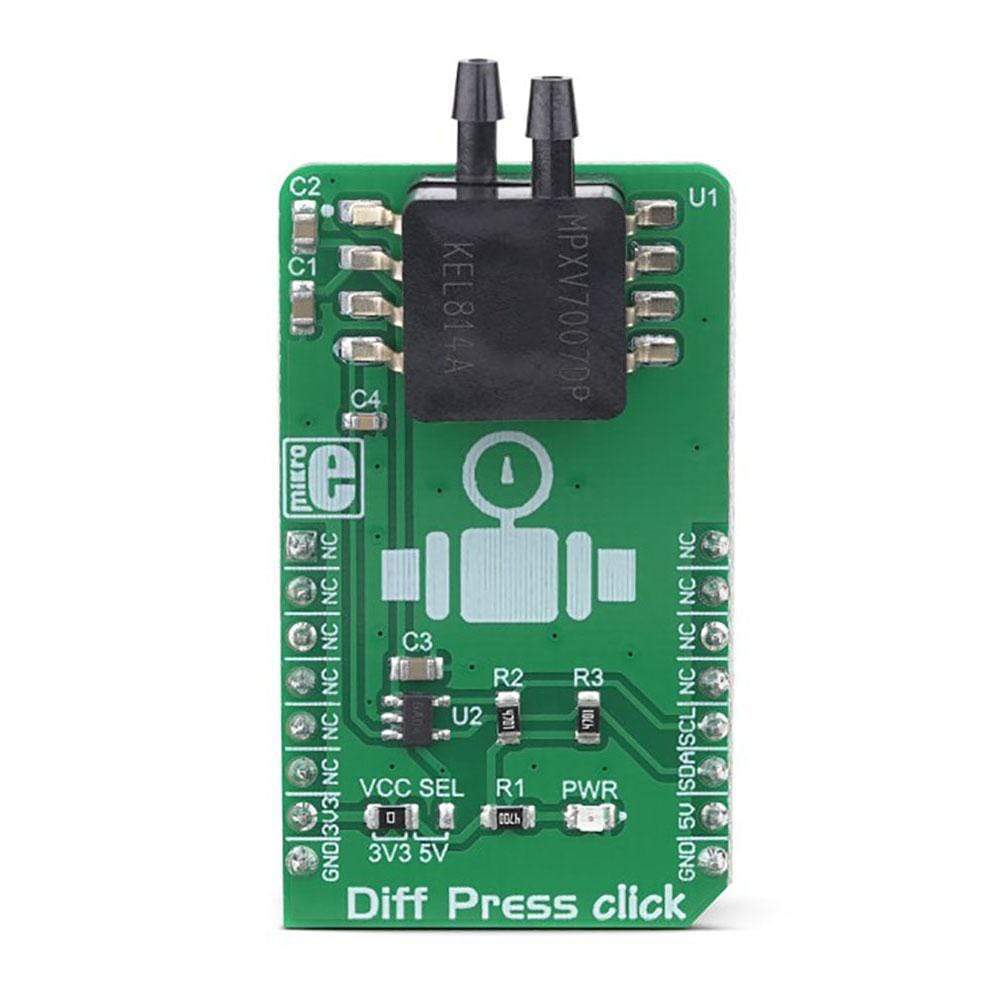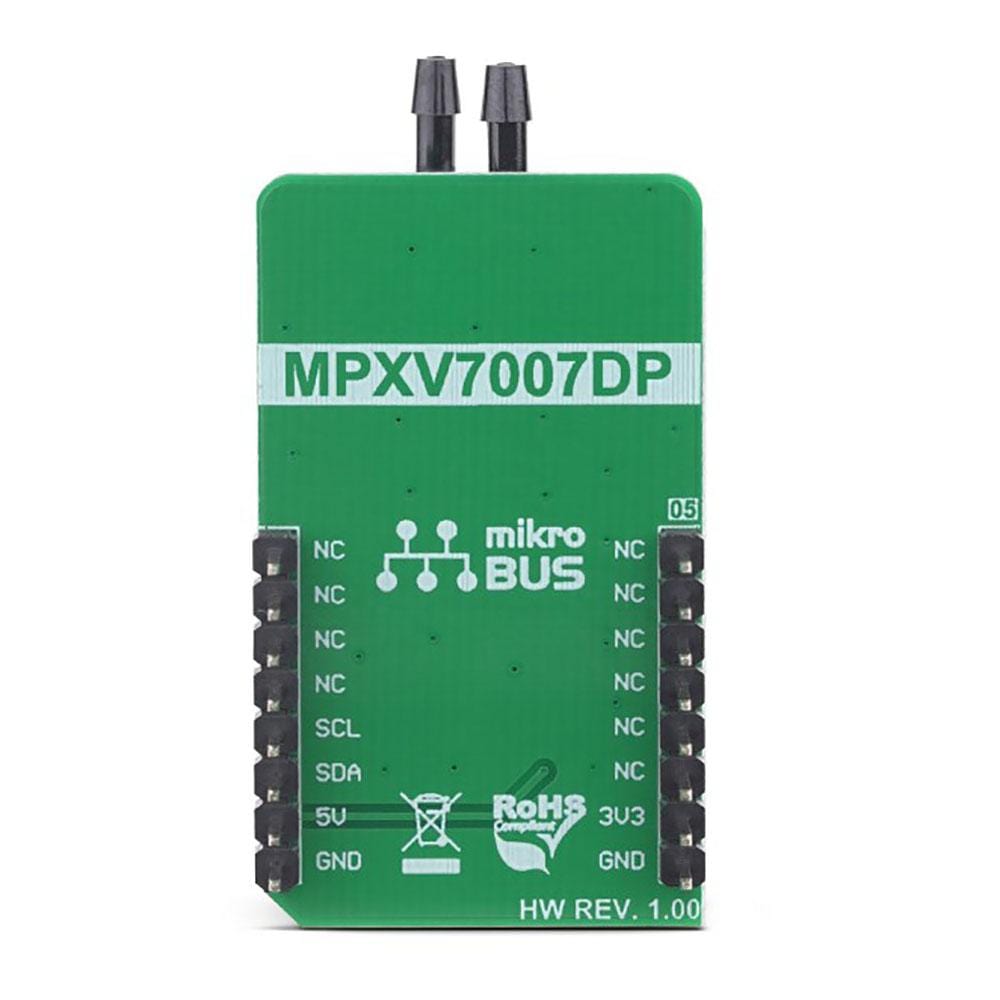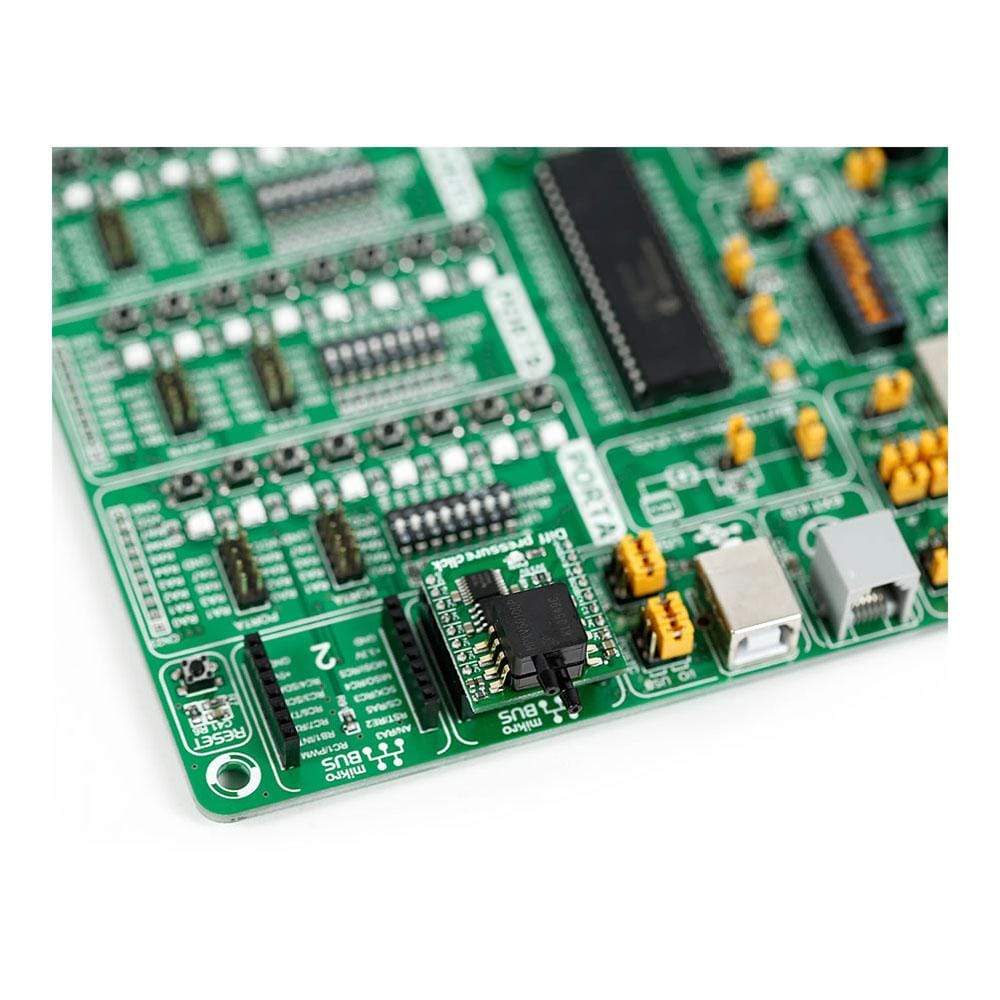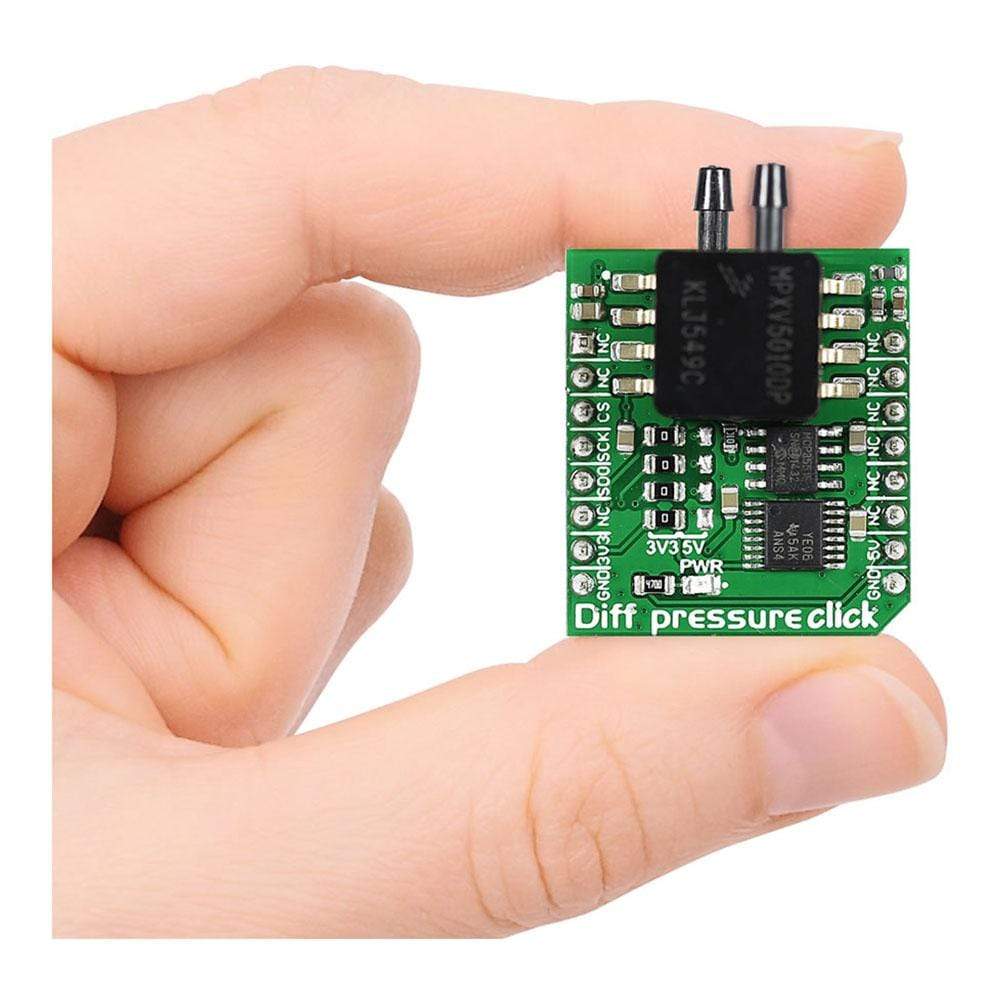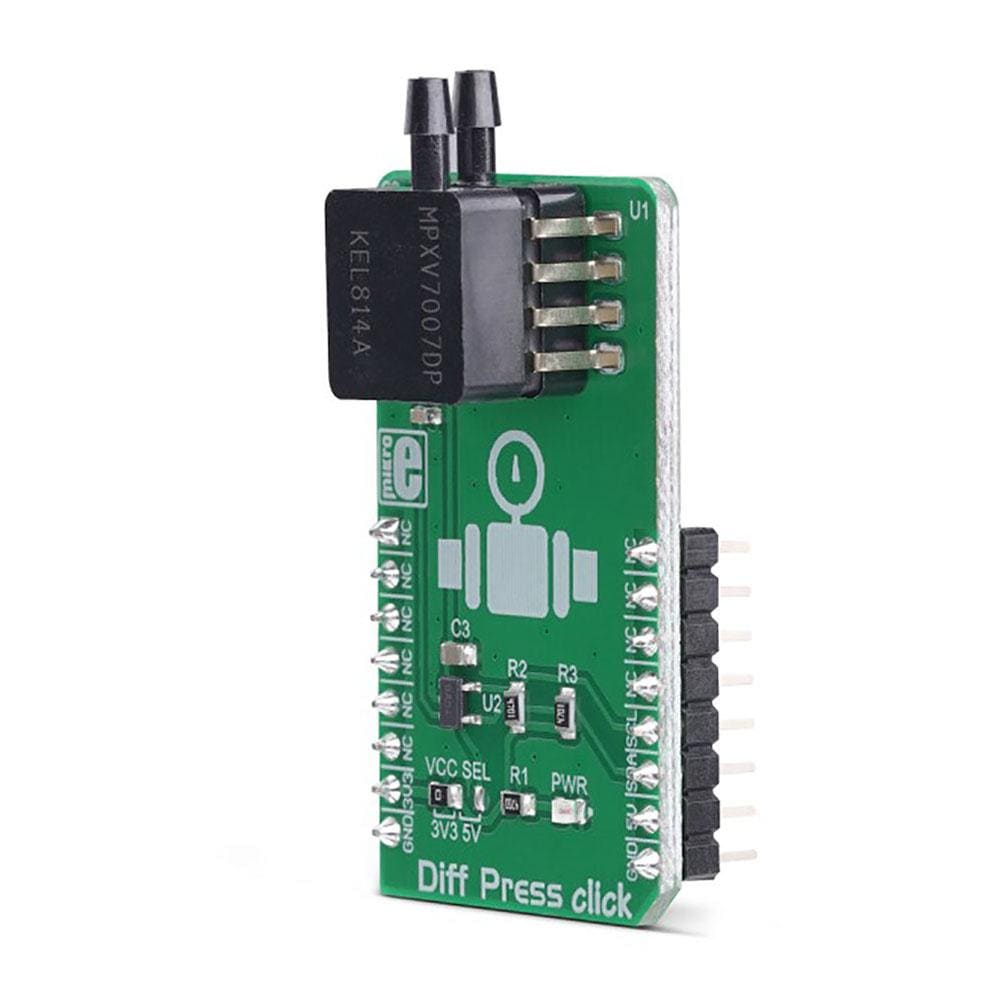
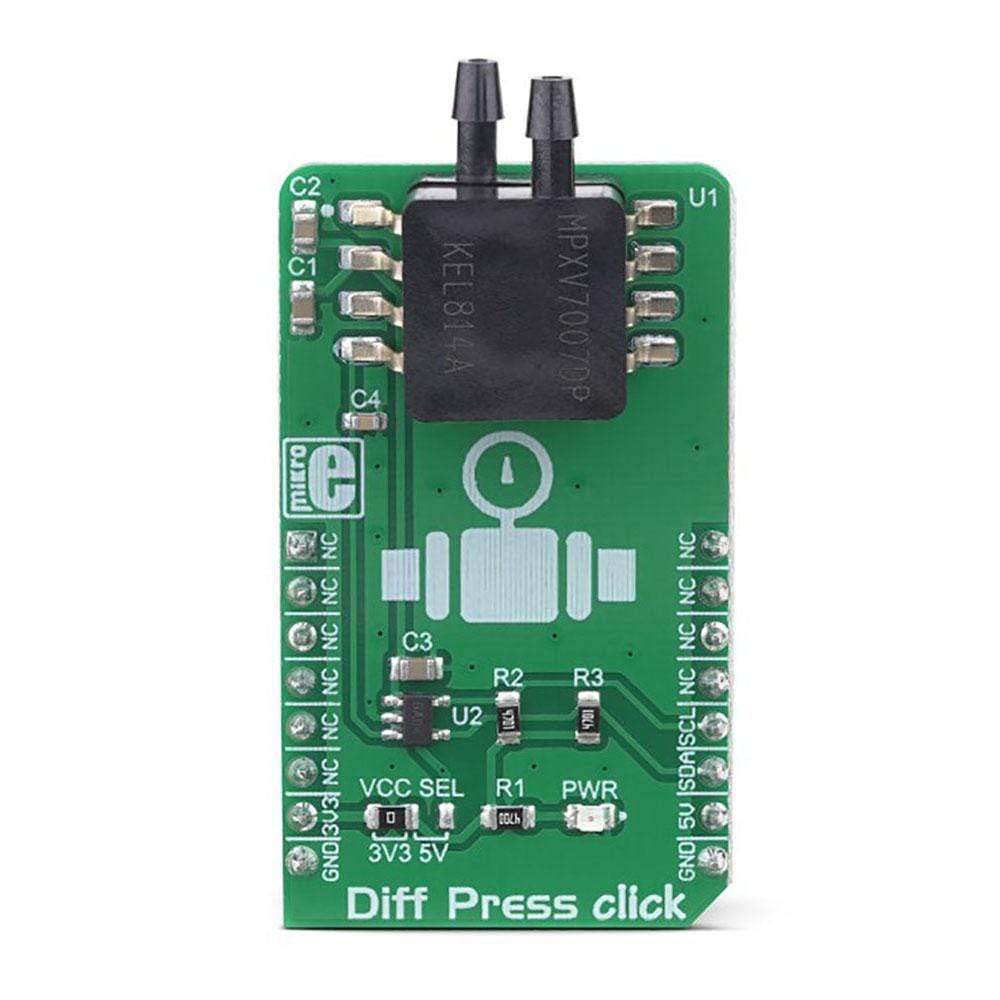
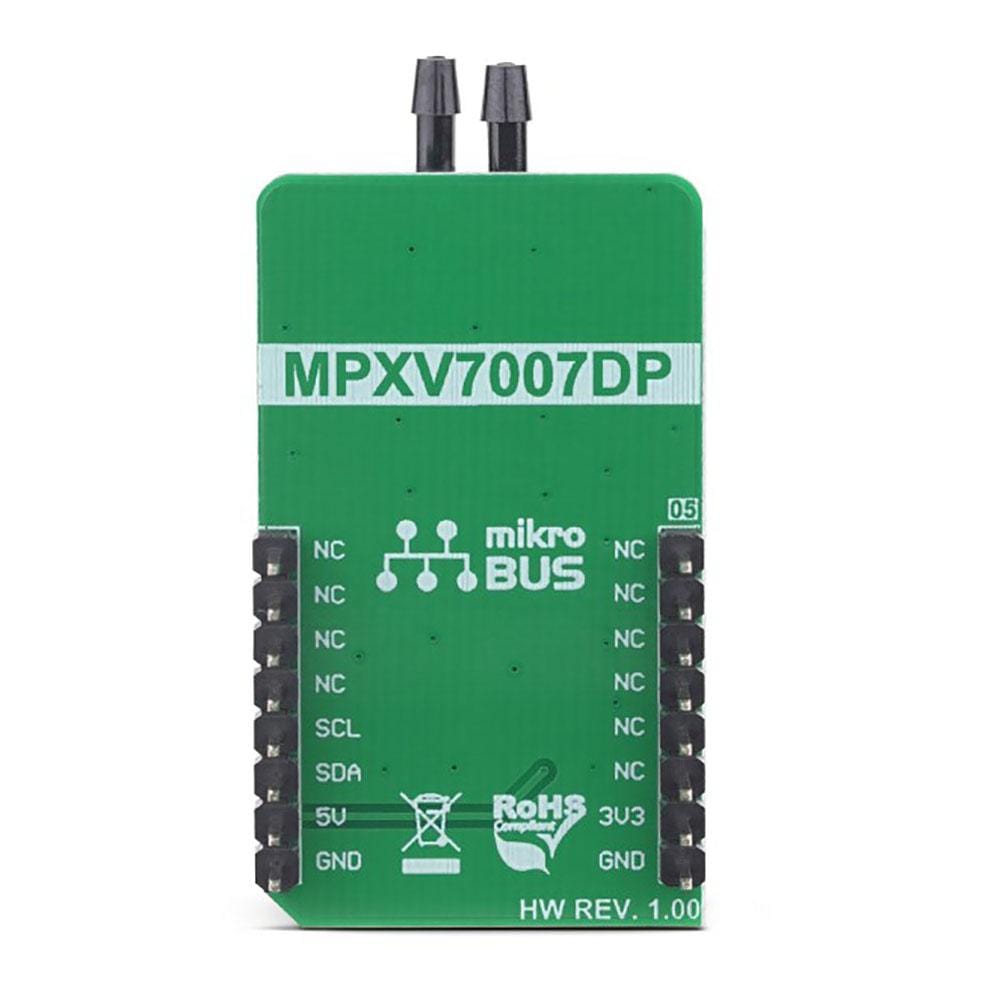
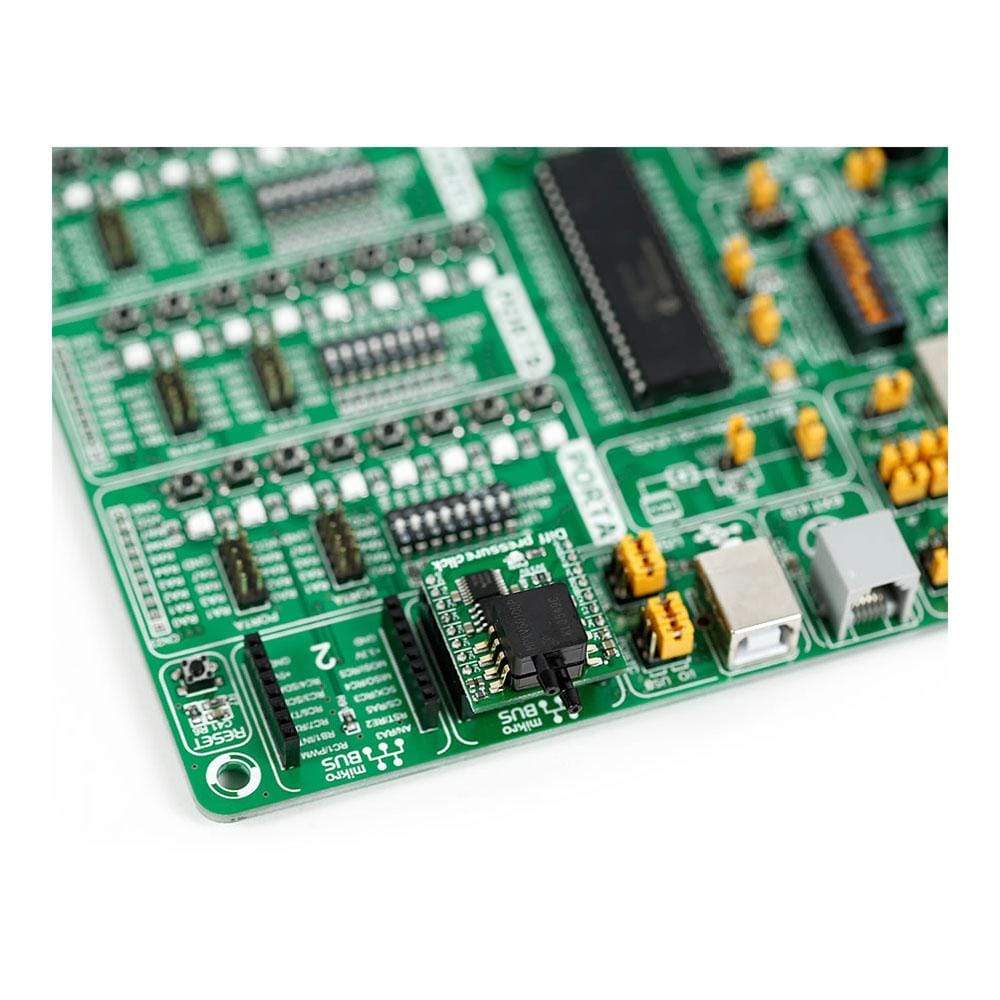
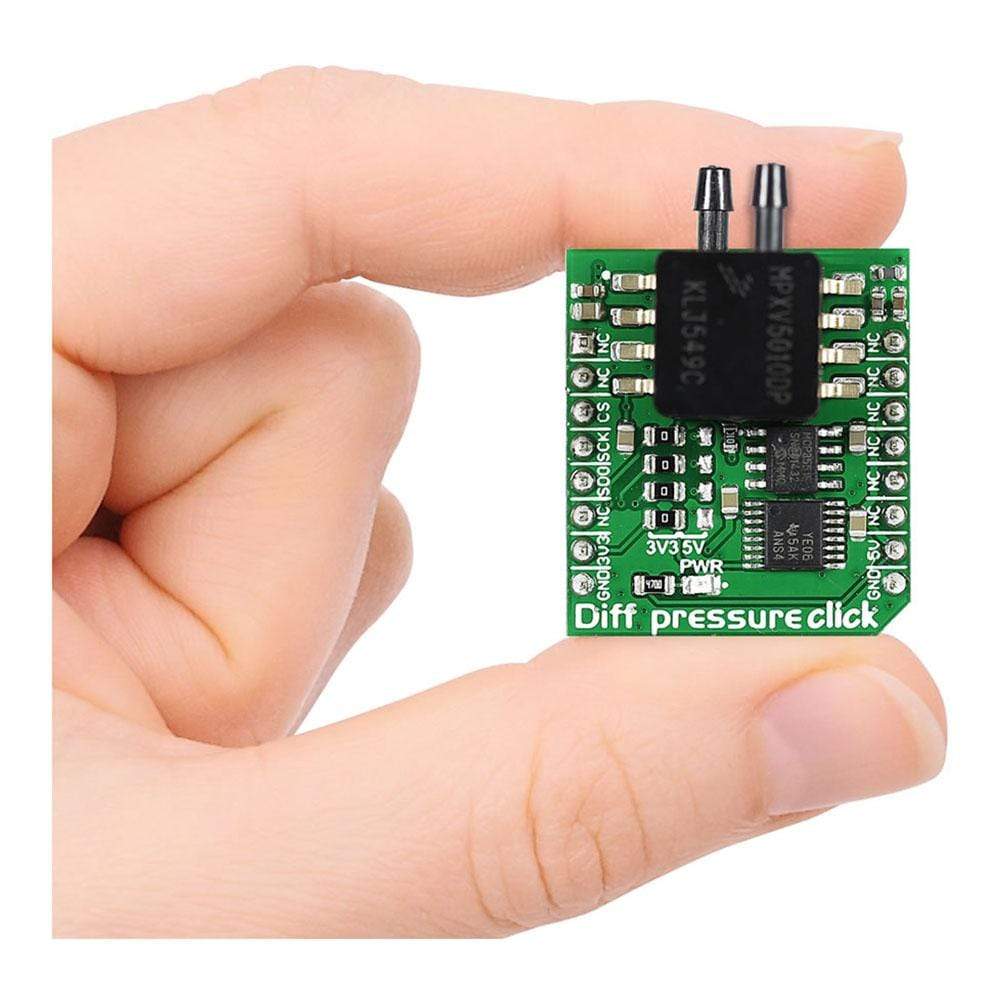
Key Features
Overview
The Diff Press Click Board™ is an accurate pressure sensor Click Board™ capable of measuring differential pressure. This Click Board™ utilizes a very precise differential pressure sensor from NXP, labelled as MPXV7007DP. This piezo-resistive transducer is an advanced monolithic pressure sensor, combining advanced MEMS manufacturing technologies with on-chip signal processing, providing accurate measurement with very low drift over temperature. The sensor outputs an analogue voltage, linearly dependent on the applied pressure. This voltage is digitized by an accurate A/D converter and delivered over the I2C interface.
Downloads
Le Diff Press Click Board™ est un capteur de pression Click Board™ précis capable de mesurer la pression différentielle. Ce Click Board™ utilise un capteur de pression différentielle très précis de NXP, étiqueté MPXV7007DP. Ce transducteur piézorésistif est un capteur de pression monolithique avancé, combinant des technologies de fabrication MEMS avancées avec un traitement de signal sur puce, fournissant une mesure précise avec une très faible dérive en température. Le capteur délivre une tension analogique, linéairement dépendante de la pression appliquée. Cette tension est numérisée par un convertisseur A/N précis et délivrée via l'interface I2C.
| General Information | |
|---|---|
Part Number (SKU) |
MIKROE-3332
|
Manufacturer |
|
| Physical and Mechanical | |
Weight |
0.02 kg
|
| Other | |
Country of Origin |
|
HS Code Customs Tariff code
|
|
EAN |
8606018714346
|
Warranty |
|
Frequently Asked Questions
Have a Question?
Be the first to ask a question about this.

